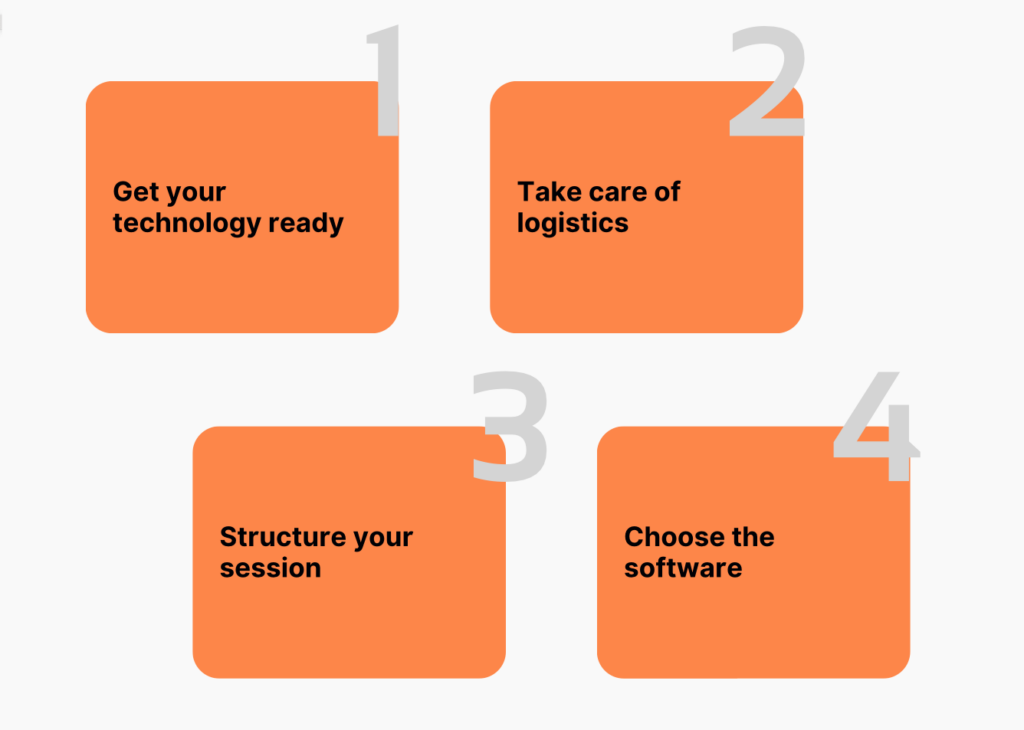How to use XR in teaching
Preparing for a VR teaching session, much like any other session that relies on technology, demands meticulous planning and coordination.
There are numerous components to consider, and even well-planned sessions can encounter unexpected issues. Prepare thoroughly and always have a plan B-or even a plan C-in place to swiftly and effectively manage any issues that might arise.
Here is how you can get ready for your VR class:

Step 1 - Getting your technology ready
VR headsets require an internet connection to function properly. To minimize potential streaming issues during your session, consider downloading the VR experiences directly onto the devices.
VR headsets managed by Åbo Akademi University (ÅAU) come with pre-configured Wi-Fi settings, so you do not need to worry about setting up the network.
However, if you are using a VR headset that is not managed by ÅAU, make sure to connect it to the Åbo Akademi Guest Wi-Fi for a smooth experience.
- Headphones are recommended to minimize distractions and enhance immersion in the VR environment. For hygiene reasons, it is advisable for users to bring their own headphones with a 3.5mm cable; Bluetooth-enabled headphones are not advised.
- It is crucial to communicate any preparation requirements for VR software well in advance to ensure readiness.
- Encourage students to a"Dry Run", advise them to a test session to check all equipment and software beforehand.
- Contact Digimentors if you want more tips and tricks when preparing for an XR-session.
Step 2 - Take care of logistics
While many VR experiences do not necessarily require a specialized lab, it is crucial to book adequate and appropriate rooms for these sessions. If feasible, consider reserving multiple rooms to facilitate simultaneous sessions, which can greatly enhance the efficiency of your VR teaching initiatives.
When booking additional rooms beyond the dedicated XR lab, ensure that these spaces offer privacy. This is particularly important if the rooms have glass walls or are in high-traffic areas, as the visibility into these rooms could compromise the psychological safety of participants using the VR glasses.
Consider printing out notices and placing them on the doors of the rooms where the VR sessions will take place. These notices should clearly inform everyone that a VR session is currently in progress and specify the hours during which entry should be refrained.
On ÅAU’s intranet, you should also check which rooms are compatible with XR devices, ensuring they have Wi-Fi and screencasting capabilities.
- If users prefer more privacy, such as when using VirtualSpeech, consider booking separate rooms. These rooms provide a private and secure environment for participants
- Using the XR lab is the safest choice. The labs are specifically tailored to XR sessions and have all the necessary infrastructure.
- Ensure that both you and your students have access to the XR lab or the rooms where the session will be conducted.
- You can book XR-headsets and bring them to the classroom as well, make sure the classroom is XR supported.
- Contact ICT-services if you want more information about the XR-lab or classrooms that support the use of XR.
Step 3 - Structure your session
When selecting a pedagogical approach for your learning objectives, consider the effectiveness of the flipped classroom model, especially when incorporating VR software.
This approach involves students independently engaging with instructional content before class, freeing up class time for interactive activities.
By combining flipped learning with VR software, students can explore concepts independently and then immerse themselves in the virtual environment during class.
- Session length: To avoid overwhelming students and to maximize the impact of the VR experience, consider conducting short sessions, ideally around 15 minutes each.
- Pedagogical assistance: Determine how many assistants you will need to help manage the students and equipment during the session. Plan who will assist whom, ensuring all students receive the necessary support.
- Technical assistance & VR usage: For any questions related to VR (and other XR technologies), you should consult ÅAU's XR pages. These pages offer detailed information on using XR headsets, troubleshooting tips, and best practices.
Step 4 - Choose the software
Finding and selecting software; Explore different sources to find the VR software that aligns best with your educational objectives.
You can review the suggested platforms in this section, consult the ÅAU’s XR intranet pages or chatbot, or seek guidance from digimentors at ÅAU.
- VR content does not necessarily need to be downloaded from the sources mentioned above; it can also be acquired from third-party vendors. Contact ICT for more assistance.
- Start small, see what works, and then later develop and incorporate more content as needed.
- To ensure smooth operation, preload the VR experiences onto the headsets. ICT services at ÅAU manages the VR headsets using management systems, taking care of content installation and configuration. If you need to install specific software on the VR headsets or computers in the XR lab, please reach out to ICT services for assistance.
- Each VR software is different, so it is important to practice using the software a few times yourself before the students arrive. This way you can also identify any potential issues that might arise during the session.
